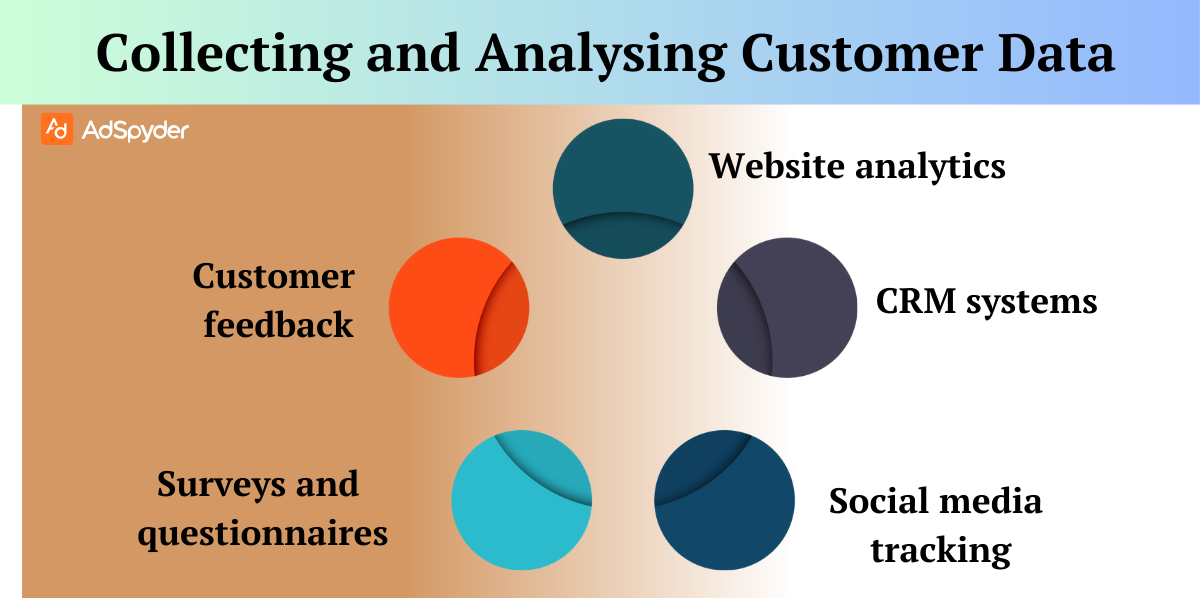Black Friday is that day when massive discounts and frenzied consumers create a scenario of fair wind for beauty and skincare brands to spike sales. With personalised digital advertising, companies are able to catch the attention of people at the peak time they search online for deals. This blog post will explain how personalised black friday ads to increase customer engagement and boost sales on Black Friday. This blog post will outline benefits of personalization, what it means to understand your audience, and steps required to create a personalised ad campaign.
Ready to Elevate your Marketing Strategy?
Advertisement has been generalised and cannot compete as it stands today. More engaging personal ads based on people’s preferences and interests are presented today and work in generating sales. Making your advertisement campaign personalised with the use of data-driven insights, you will relate to your consumers and reach lots of customers when the sale is personalised black friday ads of beauty and skincare brands.
The Power of Personalization in Digital Advertising
In digital marketing, personalization refers to the targeting of advertising messages to specific users depending on their interests, preferences, or behaviour. Personalised advertisements can, therefore, be quite relevant as they drive customers into engaging more and building better conversion for any business.
Benefits of Personalised Black Friday Ads
Personalised ads are designed for a customized experience with respect to individual preferences and behavior, then leading to higher engagement and conversion rates.
- Increased relevance: As users are likely to respond and click on relevant as well as personalised black Friday ads, they will be engaged and click through more than others. Customers who see advertisements that are relevant to their needs or interests are going to click on them and take interest in them.
- Improved customer experience: This can improve the shopper’s experience; targeting an advert to a client makes the shopping experience more individualised and fulfilling. Relevance content delivery by a brand will increase the chances of the tie between the brand and the customers as they will be sure that the brand knows their values and preference.
- Higher conversion rates: Relevant messages delivered to a relevant audience at the right time trigger higher conversion rates; hence personal ads result in high conversion rates. Whenever a client sees your promotion of a product or service that he or she is interested in, the client tends to go out and buy it.
- Enhanced customer loyalty: Personalised experiences will create deeper customer relationships and strengthen brand loyalty. These customers value your brand when you make them feel that you understand them; therefore, they will always come back and repeat your business services by referring others to your brand.
Examples of Successful Personalization Campaigns:
A strong personalization campaign makes use of customer data in delivering extremely relevant content that engenders the strongest relationship and encourages engagement. A good campaign allows tailoring experience to someone’s preference; the interaction would hence be memorable, which would enforce brand loyalty and improve overall performance.
- Amazon: Amazon has been a pioneer in personal advertising through product and service recommendations based on customer data. It aggregates enormous amounts of customer behaviour, preferences, and purchase history to make remarkably personalised recommendations.
- Netflix: Netflix allows the use of personalised algorithms for movie and television show suggestions. Well, Netflix will take into consideration the viewing history, combined with ratings in predicting what content would appeal to which person.
- Sephora: Sephora will use customers’ information to provide them with custom routines and product choices that address the needs of the customer specifically. For example, skin type, age, and other preferences for certain products will be known by the company to make better, more personalised beauty solutions.
Knowing the power of personalization, beauty and skincare brands can actually use this method to have a better, more efficacious ad campaign during Black Friday.
Explore Now: Black Friday Furniture Ads
Understanding Your Target Audience

The biggest part of effective personalised advertising is understanding your audience well. You need to identify who they are, their psychographics, and their behaviour-to know what to say to them. And in this way, you can use language or messaging that reflects not only the specific needs but also their real wants.
Key Demographic Factors
Traditionally, age, gender, income, education, and location all become very relevant demographic factors that help brands segment their audience and tailor marketing efforts in response to this segmentation. These help businesses create highly targeted and relevant campaigns that resonate with specific customer groups.
- Age: Different groups would have different tastes and requirements about beauty and skincare products. More fashionable goods and influencers would attract the younger consumers, but the older consumers are likely to be more concerned about anti-aging and skincare products.
- Gender: At one point, the nature of products consumed and preferences will most likely be affected by gender. Some of the products are strictly targeted at either feminine or masculine gender, while others can be consumed by both.
- Location: This can influence things like climate, lifestyle, and what one would prefer in terms of lifestyle. Dry climate requires different skincare habits as compared to a wet one.
- Income: The income level has an influence on the buying power of consumers aside from their preference for some product items. It is likely that high-income consumers would incur expenses on premium or luxury products in comparison to low-income consumers.
Key Psychographic Factors
Psychographic key factors include values, interests, lifestyle, attitude, and personality. If a brand understands these factors well, it will be able to generate much more personalised and emotionally manipulative advertisement content in tune with audience motivations and preferences.
- Lifestyle: This may encompass the hobbies, interests, and values of your target audience. In other words, an active person might be more interested in sweat-resistant products, while those who prefer relaxation would be keen on spa-inspired treatments.
- Values: Identify what’s most important to your target audience: perhaps sustainable, ethically sourced, or naturally sourced. Consumers with a strong sense of any of these values will seek brands that add up to that belief.
- Personality: Know what personality you want to target. Are your potential customers adventurous, traditional, or a minimalist? Each of those personalities may have different beauty and skincare product preferences.
Key Behavioral Factors
Key behavioural factors include purchase history, brand loyalty, product usage, and online activity that define how consumers interact with products and services.
- Purchase history: Analysing the purchase history of your target audience is done to see what they have purchased in the past and, thus, the preferences and needs that lie behind them. By knowing their past purchases, you can segment your ad campaigns so that you can give recommendations that are most relevant and personal to them.
- Website behaviour: Track the behaviour of your target audience in your website so as to know their areas of interest and where they get pain on it. This can be done when you track their browsing habits and understand more precisely what they are most interested in, products or information.
- Social media engagement: See what they care about and what they are interested in. That way, you will be able to focus your messaging to discuss topics of interest to them and resonate with the content they’re engaging with and even the brands they’re following.
With these factors in mind, you will be much better able to build ad campaigns that are targeted and most effective and are likely to resonate with your ideal customers.
Browse Now: Dynamic Ads for Black Friday
Collecting and Analysing Customer Data

Collect data about your customers so that you can create more targeted ad campaigns. What your customers prefer doing and have bought previously will help you craft the right message so that it strikes a chord with their specific needs and interests.
Data Collection Methods
There are quite several tools for gathering customer data such as:
- Website analytics: By following what your visitors do on the website through Google Analytics as it will trace their interest and preferences.
- CRM systems: Utilise a customer relationship management system to source and manage your customers’ data, preferably, their history of purchases, contact information, and preferences.
- Social media tracking: Monitor the social media of your customers so that you will know their interests and preferences.
- Surveys and questionnaires: Carry out a survey or questionnaire to collect explicit information concerning your customers.
- Customer feedback: It may be acquired from the customers through an interaction with customer support, reviews, or even a survey.
Data Analysis Tools
Once you have gathered your customer data, you can use data analysis tools and spot trends or insights. Popular tool includes:
- Google Analytics: A very powerful analytical tool to analyse the traffic on websites as well as user behaviour.
- Tableau: It is a visualisation tool where one can create dashboards in an interactive manner for analysis of customer data.
- Python: This is the computer language wherein it can be used in analysing very large datasets and extracting valuable insight.
Data Privacy and Compliance
Always ensure you comply with data privacy laws, such as GDPR and CCPA, while collecting and analysing customer data. You want to ensure you have the customers’ consent for their data and that it is safe.
Key Data Points to Analyse
Some of the data points you may wish to analyse when creating personalised ad campaigns include the following:
- Purchase history: Find out what products or services your customers are more interested in.
- Website behaviour: Understand what pages are most frequented by your customer’s most site visitation and what actions are taken on your website
- Demographics: Define the age, gender, or location of your target audience
- Psychographics: Understand their lifestyle, values, and personality
- Preferences and interests: Identify and understand the preferences and interests of your target audience through their online behaviour and interaction.
Collecting and analysing customer data can yield much for your company since you would be able to craft more targeted and more effective personalised ad campaigns.
Incorporating Social Media Data for Better Personalization
Incorporating social media data can significantly improve ad personalization for Black Friday. These data provides insights into user behavior, preferences, and trends. By leveraging this data, brands can deliver more relevant and engaging ad experiences. This can ultimately lead to better engagement and conversions for your offerings.
Analyze User Behavior Across Platforms
- Strategy: Track user interactions, such as likes, shares, and comments, to understand preferences. Use this information to personalize ads based on interests and social activity. The viewers are more likely to engage with your ads and what you have to offer, if they are interested in what you have to offer.
- Benefit: Helps tailor ads to specific user tastes, increasing engagement and conversion rates. It also helps spread among those audiences with similar interests and behaviours.
Leverage Social Listening Tools
- Strategy: Use social listening to monitor conversations about relevant products or brands. Identify trending topics or frequently mentioned products to personalize ad content. You can boost your own ad campaigns by including these trending topics.
- Benefit: Allows for real-time adaptation of ads to reflect current user interests and trends. Also helps in the ad going viral.
Retarget Based on Social Media Engagement
- Strategy: Retarget users who interacted with your social media content. These actions can be clicking on a post or watching a video. Customize ads to follow up with product recommendations or exclusive offers. This offers a sense of continuity and engages previously peaked interests among the audiences.
- Benefit: Boosts ad relevance by reaching users who have already shown interest, improving the likelihood of conversions.
Utilize Demographic and Psychographic Data
- Strategy: Incorporate demographic data (age, location) and psychographic data (lifestyle, values) from social platforms to segment audiences more precisely.
- Benefit: Enables highly personalized ad delivery, ensuring that the right messages reach the most suitable audiences.
Identify Influencer-Driven Insights
- Strategy: Track content associated with relevant influencers to understand what resonates with their followers. Use this data to shape personalized ad content.
- Benefit: Increases ad effectiveness by aligning with trends and preferences popularized by trusted voices.
Incorporating social media data into ad personalization strategies helps brands connect with their audience in meaningful ways. By leveraging behavioral insights and real-time trends, businesses can enhance the effectiveness of Black Friday ad campaigns. These tips are easily implemetable and provide good results during this Black Friday.
Using AI and Machine Learning for Personalization
This table illustrates how AI and machine learning can enhance personalization in Black Friday ads.
| AI/ML Technique | Personalization Strategy | Benefit |
| Predictive Analytics | Analyze customer data to predict which products they are likely to buy. | Increases ad relevance and boosts conversion rates by targeting user intent. |
| Dynamic Content Optimization (DCO) | Use AI to automatically adjust ad elements (images, headlines) based on user behavior. | Improves engagement by delivering content that resonates with individual preferences. |
| Natural Language Processing (NLP) | Personalize ad copy using AI-generated text that matches user tone and language. | Enhances user experience by creating ads that feel more relatable. |
| Automated Retargeting | Leverage machine learning to identify users who showed interest but didn’t convert. | Maximizes ad efficiency by focusing on high-potential customers. |
| Recommendation Algorithms | Suggest products based on browsing history and past purchases. | Drives higher sales by promoting items tailored to individual interests. |
Creating Personalised Black Friday Ads
Once you have gathered and analysed the data on your customers, you can begin to craft personalised ad campaigns that utilise dynamic creative and retargeting in order to deliver highly relevant messages to your target audience.
Dynamic Creative
Dynamic creative lets you tailor the ad’s content in real-time as per individual user data. So, if someone uses simpler terms, it allows you to create an ad for a specific type of user or according to their current activity. For instance, you can dynamically insert product recommendations, personalised headlines, or images based on a user’s browsing history or purchase behaviour.
Retargeting
Retargeting allows you to connect up with those people that come to your website but do not purchase. Showing them targeted ads for the products in which they have shown interest can probably convert them.
Steps to Create Personalised Black Friday ads
The process of making personal ad campaigns entails determining the special preferences and behaviours of your target audience to drive the right, targeted messaging. By using a strategic process, brands can meaningfully engage with consumers and perhaps increase the possibility of a campaign’s success.
- Define Your campaign goals: What are your goals for the campaign? What do you want to get out of a personalised ad campaign? It may be an increase in awareness of your brand, increase traffic to your website, perhaps an increase in sales?.
- Identify target audience: Segment a target audience by the data collected, as it has knowledge of the specific needs and preferences of your target audience.
- Personalized Ad Creative: Develop dynamic ad creative that is customized by user-level data.
- Set up your ad campaign: Create a campaign and choose the options in targeting on an ad platform, either through Google Ads or Facebook Ads.
- Test and optimize: A/B test other ad variations to see which one best works for personalized messaging. Campaigns need to continually be monitored and optimized based on performance data.
Examples of Personalized Ad Campaigns
Personalised advertisement campaigns make use of the information about the customer. They show users very targeted and meaningful messages. This raises engagement and conversion potential. Many examples show that personalization truly makes it easy for a brand to connect with a consumer level and thus increases their all-around customer experience.
- Product recommendations: Make sure that you show ads for products that your customers have recently viewed or searched for on your website.
- Personalised headlines: Use dynamic creative to generate headlines for individual users. For example, “You won’t want to miss out on these [product category] products you were checking out.”
- Dynamic product images: Display users images of products they have expressed an interest in, or the same products.
Using dynamic creative and retargeting you can create very personalised ad campaigns that really resonate with your audience and drive those conversions.
Dive In: Black Friday For Travel
Personalised Black Friday Ads Best Practices
Here are the best practices for conducting to have effective personalised Black Friday ads:
Start with basic personalization
Start simple with easy demographic personalizations, such as age, gender, or location. As you gain more data, you can introduce progressively more complex personalization elements. This way, you start from a basic personalization base and continually build upon it.
Avoid over-personalization
One of the guidelines of personalization is to avoid over-personalization. Over-personalization might give the impression of creepiness and may create an invasion, which might scare away a few customers. Concentrate on personalising ads based on relevant and valuable information that should not include overly specific or intrusive data.
Test and optimise
A/B testing of alternate variations of personal ads is helpful for determining which works best regarding messaging and targeting options. Monitor and optimise campaigns based on performance metrics. This will refine your personalization strategies and ensure your ads do what you want them to do.
Use a data management platform (DMP)
DMPs help in customer data formation and analysis, which in turn supports targeted advertising campaigns. You can recognise patterns and trends a lot more easily, with a consolidated view of all customer data.
Respect data privacy
Always process the data of customers according to the rules and guidelines set by data privacy. These include GDPR and CCPA. Do this through proper consent with your customers. By ensuring handling of their data securely, you provide transparency about the use of data.
Be transparent about data usage
Notify how you use your customers’ data and get their consent. It’s with this process that you build trust with your customers while developing a good name through your support towards data privacy.
Consider cultural and regional differences
Cultural and regional differences affect customer preferences and should, therefore, not go unconsidered in the personalization of your ads. What one culture would see fit to be acceptable might strike another as an insult. The knowledge of such differences will thus help you tailor your messaging to better focus on your target audience.
Follow the best practices laid out above. This should make it possible for you to create effective, engaging personalised black friday ads. At the same time, you keep respect for your customers’ privacy intact.
Case Studies
Sephora
Sephora has capitalised on personalised advertisement to a great extent during Black Friday. The company is able to leverage customer data to create product recommendations. They created targeted ads. This is to increase the chances of customer engagement and conversions.
- Strategy: Sephora collects data in the form of a combination of website analytics, CRM data and social media. Tracking was done to amass complete information about its customers. With this data in hand, it directs targeted product recommendations and retargeting campaigns.
- Results: Sephora realised the highest click through, conversion rate, and average order values in a targeted ad campaign.
L’Oréal
L’Oréal, one of the largest beauty brands in the world, has also been highly successful with personalised advertising. The company uses dynamic creative. Different ad content is personalised based on preferences identified beforehand. This delivers the right messages to these targeted audiences.
- Strategy: L’Oréal uses dynamic creative wherein the headline of the advertisement, images, and product recommendations get personalised according to the customer’s information. They also use retargeting to contact those customers that look interested in their products.
- Results: Deep engagement and conversion through the personal adverts offered by L’Oréal have increased drastically.
Kiehl’s
The skincare brand, Kiehl’s advocates for personalised approaches. They ensured that personalised advertising was put to great use to nudge sales to happen on Black Friday. It involved its customers with personalised skincare consultations. They also gave recommendations on best practices to apply particular products at home.
- Strategy: Kiehl’s offers free personal consultation services scheduled by experts of the company. After the consultation services, products are shown from Kiehl’s based on an individual’s needs and preferences.
- Results: The success of Kiehl’s is in terms of increased customer satisfaction and loyalty, which eventually leads to sales.
These case studies show that targeting with personalised advertisement can make sales rise for black Friday of beauty and skincare brands . To achieve the same, one needs to know their target audience well. Collect information from the customers and personalise ad campaigns.
View Details: Black Friday For Health Ads
FAQs
Personalized ads target users with messages tailored to their preferences, behaviors, and interests.
They offer relevant content that resonates with users, improving click-through rates and conversions.
Data on preferences, purchase history, and demographics helps tailor campaigns more effectively.
Tools like Google Analytics and CRM systems are used to analyze customer data.
Dynamic creative adjusts ad content in real-time based on user data, making it more relevant.
It re-engages users who’ve shown interest but didn’t convert by showing relevant ads again.
Over-personalization can feel intrusive and alienate customers, so balance is key.
Conclusion
Personalised digital ads have remained a top tool for beauty and skincare brands. Beauty and skin care brands can hit peak sales during Black Friday. Understand your audience and gather data about customers. Tailor-ad campaigns to bring extremely relevant messages that connect with consumers. This leads to actual conversion.
Key Takeaways
- Personalised ads can maximise the engagement of customers and ensure that sales grow on the Black Friday platform.
- Understanding your target market means effective creation of personalised campaigns.
- Data collection and then subsequent analysis of data about the customer is highly important for tailoring your messaging.
- Dynamic creative, retargeting, these are dynamic tools for the making of personalised ads.
- With help of best practices and case studies, you can personalise a way for advertising successfully without any fail.
With these personalised black friday ads strategies, beauty and skincare brands can create a more engaging, personalised shopping experience for the customers. It leads to an increase in sales and brand loyalty.




